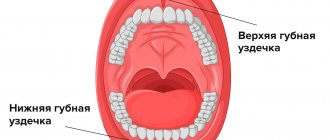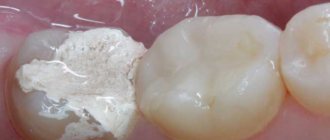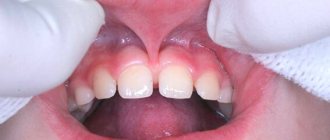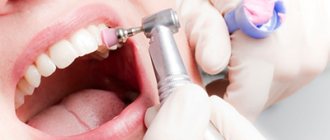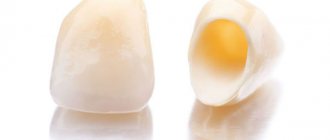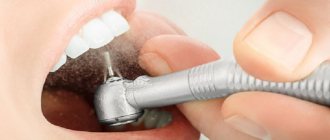Anti-aging medicine is not an appendage to the general block of aesthetic medicine, as it seems to many ordinary people. This is a huge scientific and practical experience accumulated over the years of development of the field and includes many effective methods of treatment and correction of age-related changes necessary for modern people.
. One of the areas that sooner or later every cosmetologist masters and which every woman (and even some men) thinks about over time is lip rejuvenation.
It is our lips that give away our age. After all, eyes can shine just as brightly at 17 as at 70, and wrinkles in the corners of the eyes can be passed off as traces of a smile for a long time. But if the lips decide to tell others about how old a woman really is, smile or don’t smile, but it won’t make her look any younger. That’s why she resorts to the advice and help of an experienced doctor.
Jamuna Pai
, MD, PhD, specialist in aesthetic and anti-aging medicine, speaker at international seminars, member of advisory boards and author of specialized books (India), published a detailed article about this area in the latest issue of the international magazine on aesthetic and anti-aging medicine Prime, collecting She not only shares her knowledge and scientific data, but also the results of an experiment she and her team conducted using
Juvederm Ultra XC
(Allergan, Irvine, CA), as well as detailed analysis of four case studies.
From the first part of the article, which we publish on our portal, you will learn about world standards of lip aesthetics (which directly depends on racial “belonging”), refresh your memory of the principle of operation of the muscles, nervous system and blood supply system of this area, and also become familiar with the basic lip rejuvenation techniques.
About the ideal form
Full red lips have always been and remain a unique synonym for beauty and youth, regardless of century and country.
The ancient Egyptians began painting their lips in an effort to attract more attention to them. In some cultures, bright, luscious lips are still an important social and aesthetic element that they strive to emphasize. Variations in “labial” anatomy come from racial predisposition, which can be seen firsthand by observing representatives of different races.
The ideal vertical ratio of the height of the upper and lower lip, or the “golden ratio”, was determined by the ancient Greeks and is 1:1.618
– the lips of a young Caucasian girl are taken as a sample here. Representatives of the Negroid race initially have fuller lips - this is genetically determined.
However, when creating “perfect lips,” a cosmetologist cannot rely on any clearly defined criteria (primarily because they do not exist) and must work based on his own experience, professional skills and the patient’s requests. Therefore, in order to create aesthetically beautiful lips, it is important to have a good understanding of the anatomy of this zone - this is the only way to plan the correction correctly.
Advice from expert gynecological surgeon Ivanov A.V.
The labia can be affected by herpes, fungal diseases, HPV infection or even cancer. Therefore, when you feel itching, pain or burning in the vulva, you need to consult a gynecologist. You should also see a specialist if you notice any unusual tissue growth, ulceration, warts, nodules, or discoloration of the labia.
Regarding the size of the labia, modern plastic gynecology can solve almost any problem, so do not hesitate to contact our specialized Intimate Plastic Center in St. Petersburg with such questions.
You can see photos of labia disorders here ⇒.
Anatomy of lips
The skin of the perioral zone is a stratified squamous epithelium consisting of the epidermis, dermis and hypodermis. It contains hair follicles as well as sebaceous and sweat glands, and is separated from the underlying tissue by connective tissue and muscle. On the inside of the lip there is a mucous membrane with many salivary glands called labial glands.
Muscles of the perioral zone
The most superficial layer of labial tissue is the epidermis, followed by subcutaneous tissue, orbicularisoris muscle fibers and mucosa.
Orbicularisoris is the primary muscle of the oral commissure, responsible for lip movement. It consists of two components - superficial and deep - each of which serves a specific purpose. Thus, the superficial component of the orbicularisoris muscle is responsible for closing and pulling the lips forward. The deep component of the muscle allows you to compress your lips and press them against your teeth. The orbicularisoris muscle is initiated and limited by the depressor anguli oris (DAO) and the smile muscles known as the modiolus (muscle ganglion at the corners of the mouth) ( Figure 1
).
Picture 1
Aesthetically pleasing in terms of harmony, the upper lip has a “smoothed M” shape bordered by a red border, commonly called a “Cupid’s bow.” The red border itself consists of dry and wet surfaces.
The transition between them forms a “white roller”, which becomes the defining contour and also “regulates” light reflection. The border is colored red, firstly, due to the lack of keratin, and, secondly, due to the branched choroid plexus in this area.
Blood supply and innervation
The motor innervation of the lip muscles comes from the facial nerve, and the sensory innervation comes from the maxillary (V2) and mandibular (V3) branches of the trigeminal nerve.
The blood supply to both lips occurs through the inferior and superior labial arteries. These branches of the facial artery are located in the mucosa and muscle of the orbicularis oris. The facial artery branches into the superior labial artery, just above the labial commissure. It lies at a depth of 4.5 mm along the upper lip between the oral mucosa and the orbicularisoris, just above the red border, anastomosing with the artery of the opposite side.
The inferior labial artery originates from a common trunk with the labiomental artery, where the facial artery leaves through the buccal recess deep into the platysma. The main arterial trunk runs along the alveolar margin, in the plane between the orbicularisoris muscle and the depressor muscle.
The inferior labial artery emerges from the truncus arteriosus, which “accompanies” the mental nerve to the lower lip.
Vascular network
Although each individual's vascular anatomy is unique and varies from patient to patient, and most arteries are not symmetrical, a better understanding of the general principles of action of the labial arteries is useful for performing any type of treatment in this area ( Figure 2
).
Figure 2
The upper lip has arterial arcades located under the muscles in the red border area. Superficial injection to a depth of no more than 3 mm, directly under the red border, is considered safe. Most of the vascular branches enter the red border perpendicular to it, so its border is a safe zone for superficial filler injections.
The blood supply to the lower lip is through the facial artery and its three branches. The first artery runs along the edge of the lower lip and is known as the "inferior labial artery"; the second runs horizontally - that’s why it is called the “horizontal labial artery”; and the third runs vertically through the labiomental region - we call it the “vertical labial artery.”
How to care for your labia?
When the labia are in good condition, normal hygiene procedures are sufficient. Good conditions for the functioning of this genital organ will be provided by: a daily shower, the use of special cosmetics for intimate hygiene and the choice of cotton underwear.
If the labia are deformed and enlarged, secretions can accumulate in the folds of the skin, which is an excellent breeding ground for various bacteria. In this case, an important task is careful care agreed with the gynecologist.
It is very important to properly moisturize delicate intimate areas. To do this, you should use preparations containing hyaluronic acid, which makes the skin smoother and more elastic, and reduces the friction of the lips against each other.
Moisturizing the intimate area
Proper care of the labia not only prevents bacteria and viruses from entering the reproductive system, but also makes the vulva healthy.
"Aging" of lips
In order to competently draw up an effective correction plan, it is first of all important to understand the impact that general aging of the body has on the lips and perioral zone.
At a young age, the skin in this area is smooth, with minimal nasolabial folds and almost no wrinkles. Over time, lips become thinner (so-called lip atrophy occurs) - the laws of gravity and the photochemical effect are to blame.
In addition, with age, the area around the lips develops fine perioral lines and wrinkles, marionette lines (caused by sagging corners of the mouth), and a flattening of the “Cupid's arch” and columns of the philtrum. External factors such as smoking and prolonged exposure to direct sunlight also speed up the aging process.
Aesthetics
Symmetry and proportions play an important role in determining the attractiveness of a young face.
Over time, these ideals have changed, and today's esthetician must follow these unofficial rules to achieve their desired goals. To facilitate the perception of aesthetic ideals, the face is conventionally divided into horizontal thirds. The upper third is defined from the hairline to the glabella, the middle third is from the glabella to the base of the nose, and the lower third is from the base of the nose to the tip of the chin.
The lower third of the lip must meet the golden ratio of 1:1.618 (that is, the lower lip must be one and a half times larger than the upper lip) to be considered aesthetically pleasing. This ratio is used mainly when analyzing the lips of Caucasians.
In the eastern part of the world, where the bulk of the population is Mongoloids, this ratio can be reduced to 1:1. In addition, on the sides, the upper lip should protrude 1-2 mm further than the lower lip.
These ideals have evolved over many centuries and today serve as a template for practitioners when creating a treatment plan.
Fillers
Today there is a whole list of options for lip correction and augmentation.
Techniques such as dermabrasion, laser and chemical peels are commonly used for rejuvenation by targeting the perioral area. However, the most common approach to creating aesthetically pleasing, fuller, more youthful lips is the use of commercially available dermal fillers.
Initially, the material for rejuvenating soft tissues of the face was bovine collagen; However, today the ideal filler is considered to be biocompatible, biodegradable, easily adaptable to the patient’s facial anatomy, gives a natural effect and is not permanent. The molecule that meets all these requirements is known to every cosmetologist - this is hyaluronic acid.
Hyaluronic acid
Hyaluronic acid (HA) is a natural, highly hydrophilic polymer discovered 70 years ago.
Hyaluronic acid, also known as hyaluronan, is an anionic non-sulfonated glycosaminoglycan widely distributed in connective, epithelial and nervous tissues. The average 70kg person has about 15 grams of HA in their body, of which one third is degraded and synthesized daily. HA is a glycosaminoglycan disaccharide consisting of alternating repeating units of D-glucuronic acid and N-acetyl-D-glucosamine.
The hygroscopic properties of hyaluronic acid allow it to be an excellent filler for soft tissues (particularly lips), as it absorbs large amounts of water, thereby moisturizing and filling them.
Another important advantage of hyaluronic acid is that it can be cross-linked in different ways, allowing the production of gels of varying densities. Fillers with high cohesiveness and lower viscosity are softer and, as a result, they become the drugs of choice when working with lips.
The study we performed used Juvederm Ultra XC (Allergan, Irvine, CA).
Possible pathologies
Various damage to the musculocutaneous tissue and mucous membranes may indicate a number of diseases, including those not associated with dermatological disorders. Manifestations may include cracks, skin peeling, purulent, ulcerative formations, plaque, blisters, nodules, excessive salivation and other unnatural conditions. If we consider possible pathologies, the most common are:
- Herpes. Most often it occurs on the lips and mouth, although the formation of viral foci is also noted on other mucous membranes.
- Cheilitis. It is characterized as an inflammatory disease that occurs specifically on the lips and in the oral cavity. Has various forms and appearances.
- Zaeda. Inflammation caused by streptococci and fungi.
- Chronic fissure. It refers specifically to diseases when the crack is long-lasting and an inflammatory focus is constantly formed. Such chronic reactions can occur for a variety of reasons, including if the structure of a person's upper lip or lower lip has anatomical features that predispose it to permanent damage.
There are other pathological conditions that have different manifestations, affecting the lips and oral mucosa. They require mandatory diagnosis and subsequent adequate treatment.

